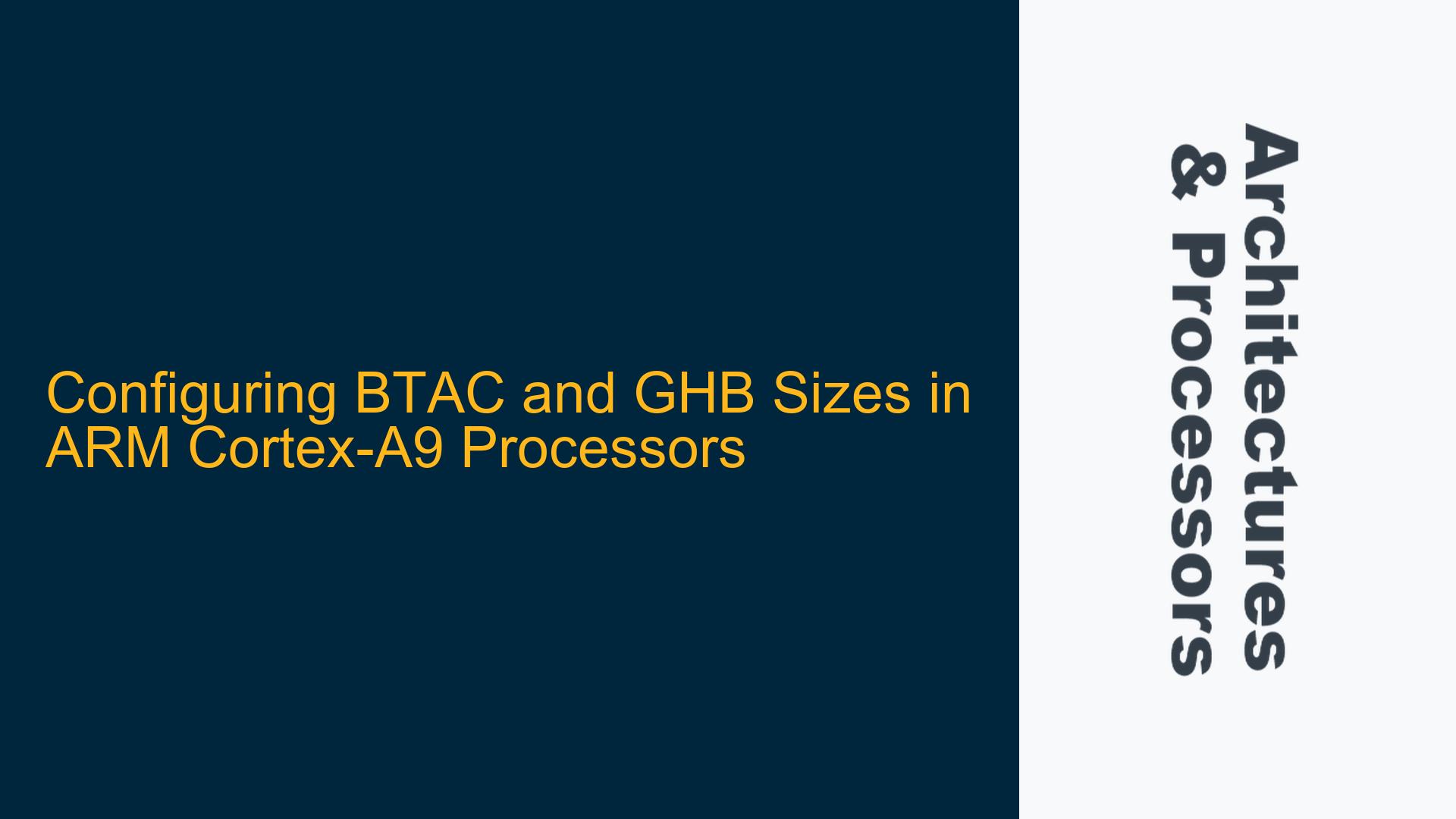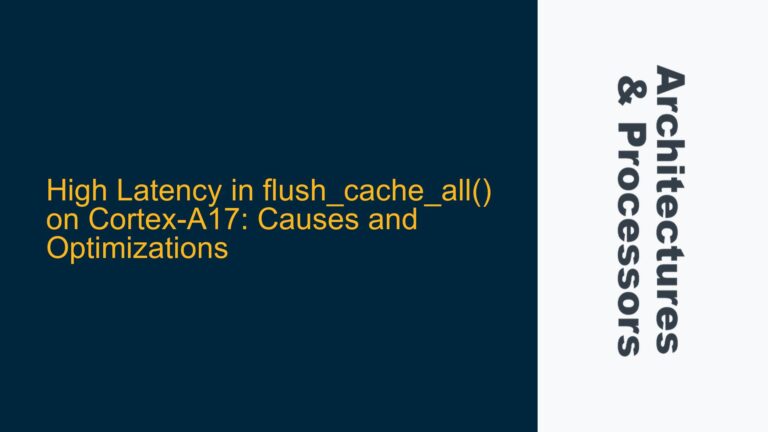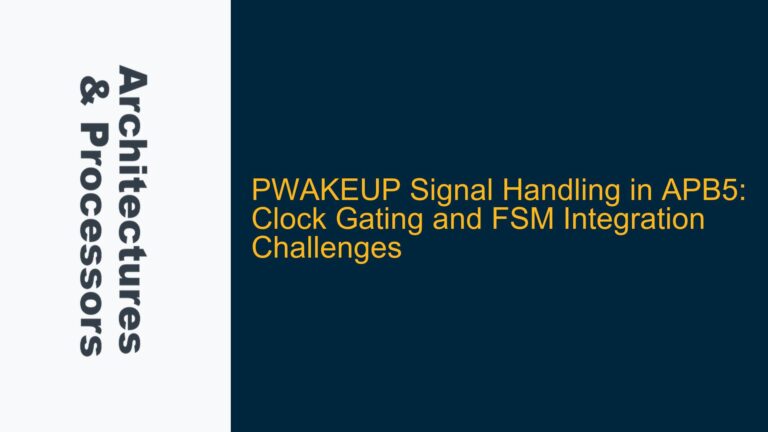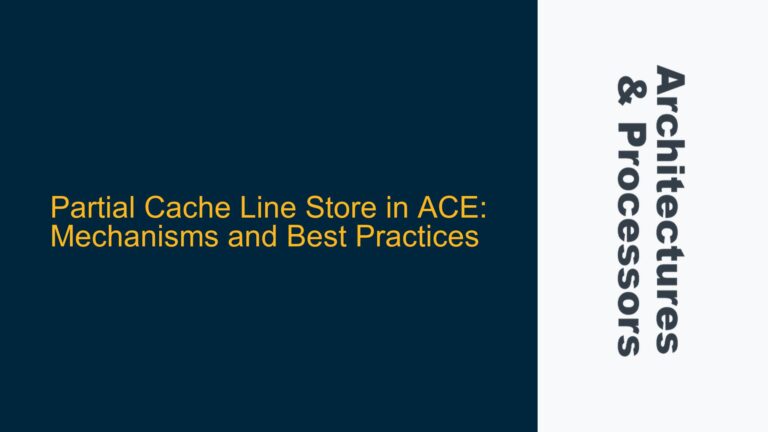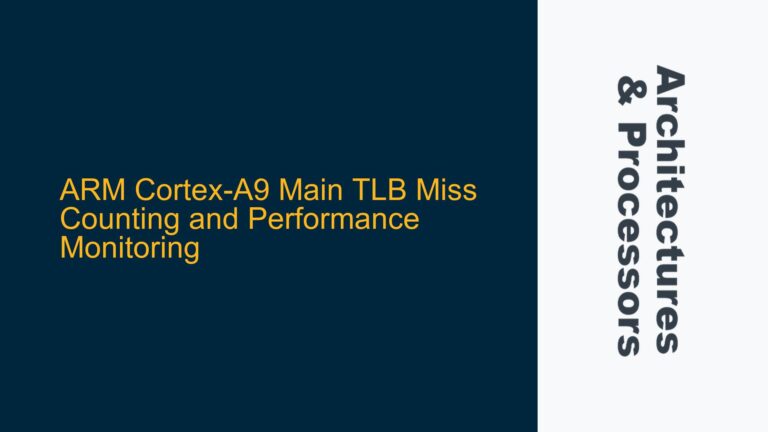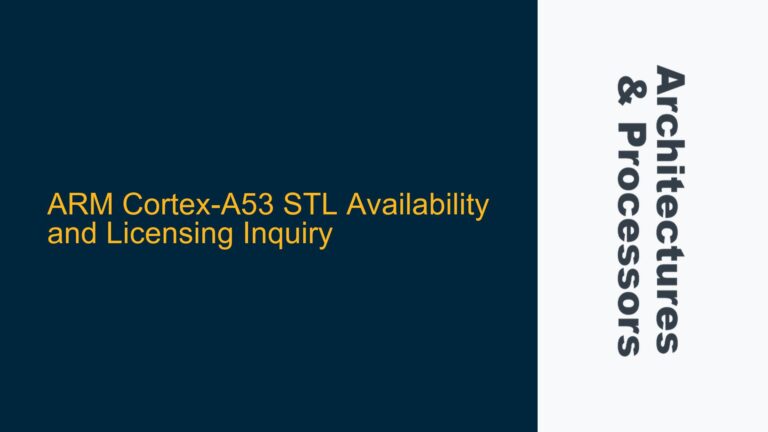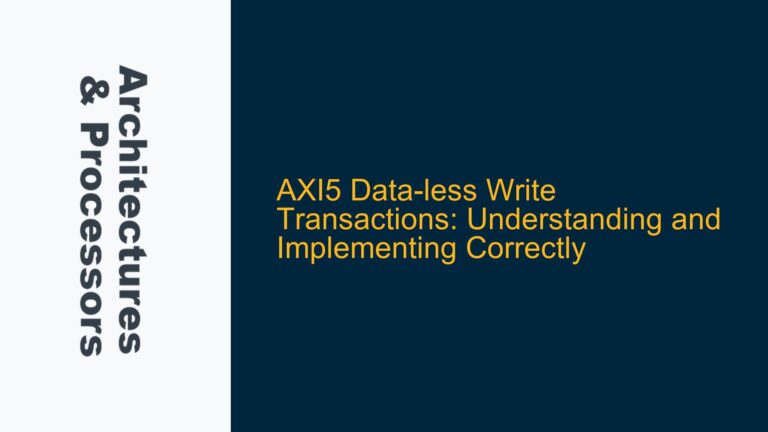Understanding BTAC and GHB Configuration in Cortex-A9
The Branch Target Address Cache (BTAC) and Global History Buffer (GHB) are critical components in the ARM Cortex-A9 processor’s branch prediction mechanism. The BTAC stores predicted target addresses for branch instructions, while the GHB maintains a history of branch outcomes to improve prediction accuracy. The Cortex-A9 Technical Reference Manual (TRM) mentions that the sizes of these structures can be configured, but it does not provide explicit instructions on how to do so. This lack of documentation can lead to confusion for developers seeking to optimize their systems for specific workloads.
The BTAC and GHB are part of the Cortex-A9’s microarchitecture, designed to reduce branch misprediction penalties and improve instruction fetch efficiency. The BTAC typically stores a limited number of entries, each containing a branch instruction’s address and its predicted target address. The GHB, on the other hand, tracks the outcomes of recent branches to predict future branch behavior. Configuring the sizes of these structures allows developers to balance performance and resource utilization based on their application’s requirements.
However, the Cortex-A9 TRM does not provide a straightforward method for configuring the BTAC and GHB sizes. This omission is likely due to the fact that these configurations are often handled at the silicon design level, with limited flexibility for end-users. Despite this, understanding the potential configuration options and their implications is essential for developers working on performance-critical applications.
Potential Misconfigurations and Their Impact on Performance
One of the primary challenges in configuring the BTAC and GHB is the lack of visibility into the default settings and their impact on performance. The Cortex-A9 processor does not expose direct control over these structures through standard programming interfaces, making it difficult to fine-tune their behavior. This limitation can lead to suboptimal performance in applications with specific branch patterns, such as those with highly irregular control flow or large numbers of indirect branches.
Another potential issue is the interaction between the BTAC, GHB, and other microarchitectural features, such as the instruction cache and data cache. Misconfigurations in the BTAC or GHB can lead to increased cache misses, pipeline stalls, and reduced overall system performance. For example, an undersized BTAC may result in frequent evictions of branch target addresses, leading to increased branch misprediction rates. Similarly, an improperly configured GHB may fail to capture the necessary branch history, resulting in poor prediction accuracy.
In addition to performance impacts, misconfigurations in the BTAC and GHB can also affect power consumption. Larger structures generally consume more power, but they may also reduce the number of pipeline stalls and improve overall efficiency. Balancing these trade-offs requires a deep understanding of the application’s workload and the processor’s microarchitecture.
Strategies for Optimizing BTAC and GHB Configuration
While the Cortex-A9 TRM does not provide explicit instructions for configuring the BTAC and GHB, there are several strategies that developers can use to optimize these structures for their specific applications. One approach is to analyze the application’s branch behavior using performance monitoring tools, such as ARM’s Performance Monitoring Unit (PMU). By collecting data on branch misprediction rates, BTAC hit rates, and GHB utilization, developers can identify potential bottlenecks and adjust their code or system configuration accordingly.
Another strategy is to experiment with different compiler options and code optimizations that influence branch behavior. For example, using profile-guided optimization (PGO) can help the compiler generate code that is better suited to the processor’s branch prediction mechanisms. Additionally, restructuring code to reduce the number of indirect branches or improve branch predictability can have a significant impact on performance.
In cases where direct configuration of the BTAC and GHB is not possible, developers can explore alternative approaches to improving branch prediction accuracy. For example, using software-based branch prediction techniques, such as static branch prediction hints or custom branch prediction algorithms, can help mitigate the limitations of the hardware-based mechanisms. These techniques require careful implementation and testing but can provide significant performance benefits in certain scenarios.
Finally, developers should consider the broader system context when optimizing BTAC and GHB configuration. Factors such as cache size, memory latency, and processor frequency can all influence the effectiveness of branch prediction. By taking a holistic approach to system optimization, developers can ensure that their applications achieve the best possible performance on the Cortex-A9 processor.
Conclusion
Configuring the BTAC and GHB in the ARM Cortex-A9 processor is a complex task that requires a deep understanding of the processor’s microarchitecture and the application’s workload. While the Cortex-A9 TRM does not provide explicit instructions for configuring these structures, developers can use performance monitoring tools, compiler optimizations, and software-based techniques to optimize branch prediction accuracy and overall system performance. By carefully analyzing branch behavior and considering the broader system context, developers can overcome the limitations of the hardware and achieve significant performance improvements in their applications.
